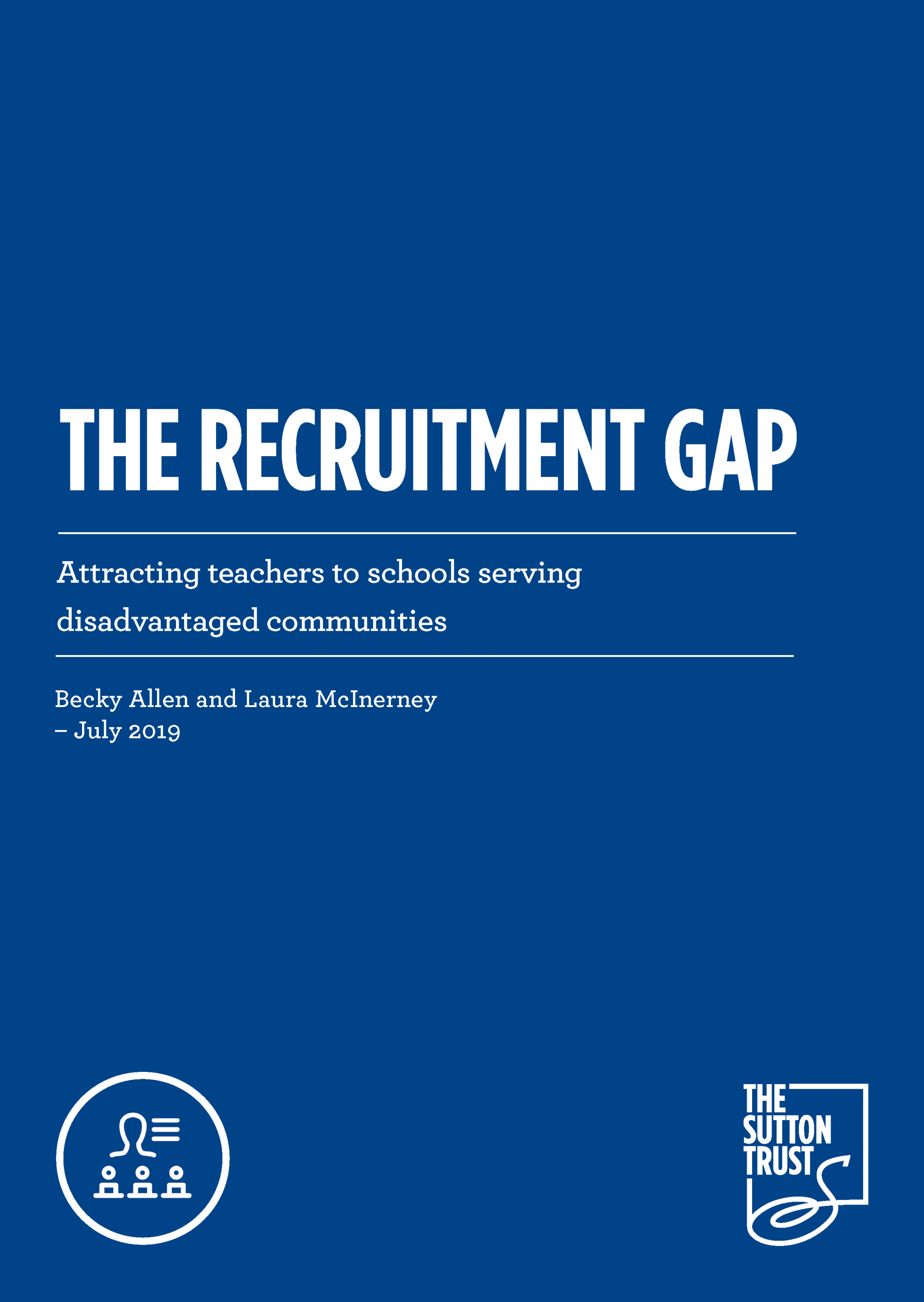Report Overview
It has long been recognised that schools serving disadvantaged communities are more likely to be staffed by teachers without qualified teacher status, with fewer years of experience and by non-specialist science and maths teachers. Inequality in access to suitably qualified, high quality teachers is likely to be an important contributor to the attainment gap that exists between students who come from disadvantaged families and those who do not.
In this report, we analyse survey responses from over 7,000 primary and secondary school teachers in order to expand our understanding of how teachers feel that recruitment difficulties and teacher shortages affect their school. Surveys were conducted through Teacher Tapp, an app that asks teachers in state and independent sectors three questions a day. ‘The Recruitment Gap’ is authored by Teacher Tapp’s founders, Professor Becky Allen and Laura McInerney.
Over half of headteachers in the most deprived schools are concerned about finding suitable teachers.
Over four-fifths of teachers in the poorest schools say recruitment issues are affecting the quality of education.
Four-fifths of teachers would consider moving to a school in special measures if the conditions were attractive.
- Schools serving disadvantaged communities struggle to recruit suitable teachers
- Schools serving disadvantaged communities experience greater recruitment difficulties, mirroring turnover statistics in administrative data.
- In general, these social inequalities are more pronounced in the secondary sector (and shortages there are worse overall).
- Social inequalities are worst in core subjects of maths and sciences, where one-in-three departments within schools serving the most disadvantaged communities saying they are currently not well-staffed.
- Teachers in disadvantaged schools are less attached to teaching as a career
- Teachers in secondary schools serving disadvantaged communities are the most likely to say they will soon leave the profession and seem least attached to their work.
- Teachers believe schools serving disadvantaged communities are harder to teach in
- Reputation matters: more affluent schools seem to be attractive due to their ‘reputation’.
- Teachers overwhelmingly agree that teaching in schools serving more disadvantaged communities tends to involve harder work and requires more skills.
- Teachers typically prefer to teach classes with higher attaining pupils and fewer behaviour problems.
- Shortages are best dealt with by pursuing local recruitment strategies
- 80% of teachers are willing to consider a local move to a school with recruitment challenges, provided the conditions are right.
- Though expensive, the right conditions – pay, promotion, and a reduced timetable – are attractive to many.
- However there are other low-cost perks that schools could also offer, including lower marking loads, quality training opportunities and mentoring.
- Women outside their twenties are quite unwilling to consider longer commutes, which has implications for the profession given its demographics (especially in primary).
- Social inequalities in teacher recruitment should be monitored by government. Understanding this is crucial since not all schools are equally affected by teacher shortages.
- Spending pupil premium money on teacher wages and professional development may help disadvantaged schools to overcome their recruitment struggles. While this is already allowed under pupil premium spending guidelines, this needs to be emphasised further.
- Schools serving more challenging communities need support in creating a working environment that can appeal to teachers who might not otherwise consider them.
- Since ‘reputation’ is important in teacher recruitment, schools need help in signalling what it is like to work at their school, and teachers should be helped to make decisions with greater confidence. This could include being more specific in job adverts about workload, behaviour management and training opportunities.
- Social segregation in schools should be tackled. Many of the issues highlighted in this report are as a result of inequalities in school intakes. A more even social mix in schools would help to address disparities in perceived reputation.
- The government could consider requiring teachers in receipt of substantial bursaries to teach in more disadvantaged schools or in particular areas as a condition of the bursary. This would need to be done with care, ensuring that a place at one of these schools was indeed available to the trainee teachers and that the school was able to provide them with the sort of environment where they were able to thrive.
- More should be done to ensure the initial allocation of training places reflects local supply needs. Where there are parts of the country with shortages and no existing training provision, long-term shortages might best be addressed by the government proactively setting up a new initial teacher training organisation, whether as part of a school, a trust or as a stand-alone entity.



